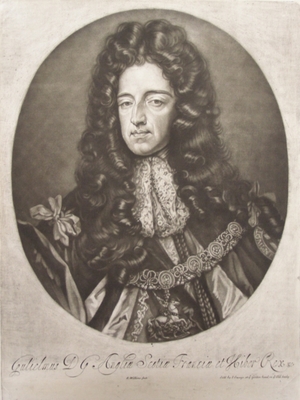
For reservations to experience “nkwiluntàmën: I long for it; I am lonesome for it (such as the sound of a drum)” by Indigenous artist Nathan Young, please go to https://nkwiluntamen.com/
March Collections Featurette
- March 9, 2011
- Posted By: Pennsbury Manor
Don’t Flip Your Wig!
As historic site guides and interpreters we not only tell stories to our wonderful visitors but show them the “stuff’ of the past, as well. Here is a technique that I was recently enthusiastically encouraged to share.

Formal portraits show us that in late-seventeenth century Europe men were wearing their hair long. By the era of the American Revolution hair had become shorter. (Another article may appear talking in general terms about changes in fashion during the Penns’ era.) Wigs were popular in both periods. Male fashions were set by royalty. Monarchs had expectations for visitors’ appearance. They seemed to have wanted to control the 
As Philadelphia developed at a very rapid pace, many tradesman and artisans set up shop to take advantage of the growth. The city soon acquired a wood turner (who was also a saddler) named Henry Furnis who set up shop in one of the caves along the river. Penn wanted folks out of them – and quick! We have correspondence between Penn and Furnis in which we see 
You can now see that we can use objects to make deeper connections to the past for visitors. With a simple wig stand we can tell the story of changes in fashion, expanding empires, and even employment among tradesmen. Oh, and shopping! Hhhmmm, do you think we should offer wig stands in our Gift Shop?